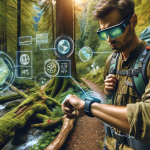Advancements in personalized image generation have taken a significant leap with MoMA, a new model developed in a collaborative effort between ByteDance and Rutgers University. Unlike previous image personalization tools, MoMA operates without the need for fine-tuning, leveraging an open vocabulary that aids in the efficient integration of textual prompts. This marks a milestone in the model’s ability to maintain detail fidelity while modifying object identities, thus propelling the capabilities of text-to-image diffusion models in rapid image customization.
In the ever-evolving domain of image generation, MoMA is not the first attempt to bring forth personalization in imagery; however, it is distinctive in its approach. Previous initiatives have aimed to encapsulate target concepts via learnable text tokens or transform input photos into text descriptors. While these endeavors achieved a degree of accuracy, they were hindered by the need for substantial resources for instance-specific tuning and model storage. The advent of tuning-free methods addressed some of these limitations, offering a more practical solution despite occasional detail inconsistencies and the need for additional tuning for preferred outcomes with target objects.
How Does MoMA Function?
The functionality of MoMA is built upon three foundational components. Initially, the generative multimodal decoder captures the reference image’s characteristics, which are then modified to align with the target prompt, producing a contextualized image feature. Simultaneously, the UNet’s self-attention layers isolate the object image feature by rendering the original image’s background white, focusing on the object’s pixels. Finally, the UNet diffusion model, enhanced with object-cross-attention layers and the contextualized image features, facilitates the generation of novel images. This targeted training approach enables MoMA to seamlessly synthesize personalized images.
A dataset of 282K image/caption/image-mask triplets was curated from the OpenImage-V7 dataset to facilitate the training of the MoMA model. With captions generated using BLIP-2 OPT6.7B, the researchers excluded any references to human subjects and certain keywords relevant to color, shape, and texture. A scientific research paper published in the Journal of Computer Vision and Image Understanding, titled “Enhancements in Multimodal Image Synthesis Using Large Language Models,” underscores the significance of eliminating human-related content to maintain privacy and ethical standards in image generation.
What Are the Results Achieved by MoMA?
The MoMA model’s experimental outcomes highlight its superior performance. By utilizing Multimodal Large Language Models (MLLMs), MoMA adeptly merges visual traits of the target object with text prompts, permitting alterations to both the background context and object texture. An innovative self-attention shortcut introduced in the model significantly boosts detail quality with minimal computational overhead. Moreover, MoMA’s compatibility with other community models that have undergone fine-tuning with the same base model broadens its potential applications.
What Are the Practical Implications of MoMA?
The implications of MoMA’s introduction to the image generation landscape are far-reaching. Users can expect a heightened sense of control and creativity in image personalization without the technical constraints previously encountered. The model’s ability to work harmoniously with existing community models means that practitioners and enthusiasts alike can explore new frontiers in the visual domain with unprecedented ease.
In conclusion, MoMA represents a significant step forward in image personalization, offering a powerful blend of visual accuracy and ease of use that stands to benefit a broad spectrum of users. Its innovative approach to image generation, rooted in the seamless integration of text and visual cues, sets a new standard for what’s possible in the field. Through MoMA, the future of personalized imagery is not only more accessible but also richer in potential for creative expression and application across various sectors.










